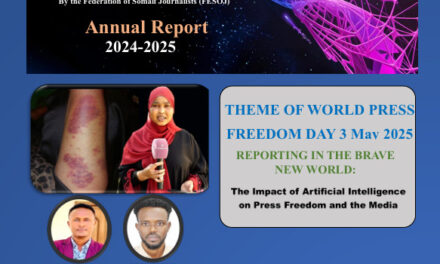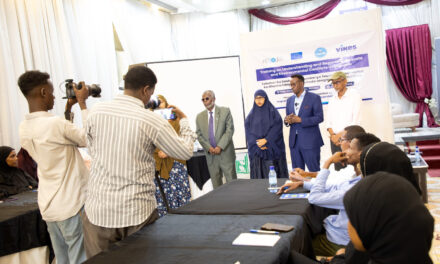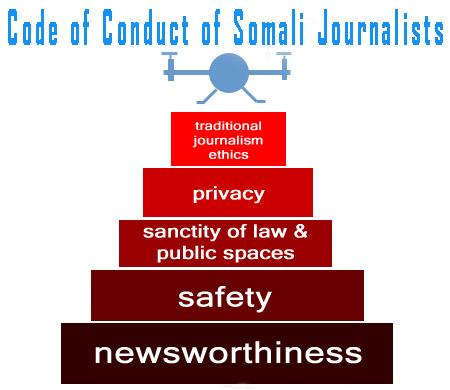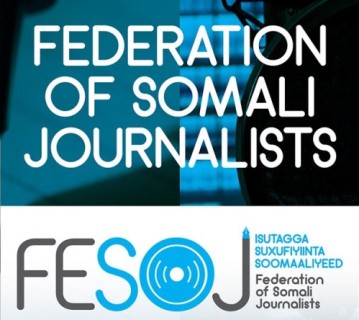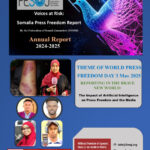
Journalist Ethics
Code of Ethics of Somali Journalists
During general assembly of Federation of Somali Journalists from 27 to 30 June 2019 in Mogadishu, 77 members of the federation from most parts of Somalia developed and adopted its Code of Ethics since there was no common code of ethics between Somalia media, despite some special media outlets developed their own. With the proliferation of media types, it has become necessary to agree a common Code to meet the new challenges that have emerged due to the mmajor changes made by Somali media in the past decade.
The challenges include the impact of media pluralism and diversity, and the sheer numbers of radio and television stations across the country. Meanwhile, the emergence of new media forms including social media has further exacerbated the situation.
One critical objective of this Code of Ethics is to take cognizance of all ethical breaches that have been identified in the practice of journalism in the country.
It is expected that this Code will encompass all the challenges across the traditional, new media, social media and cross media as far as newsgathering, processing and dissemination are concerned. It is our considered view that this effort will inevitably promote accountability, build trust and add value to the output of journalism and media organizations, and raise the image of the profession.
PREAMBLE
- The Code of Ethics of Somali Journalists is a ready guide that is applicable to all categories of journalists working with newspapers, radio, television, cross media/multimedia, online media, new media, social media or those working as photo-journalists, cartoonists, and animation specialists.
- The Code is meant to ensure that members of the Federation of Somali Journalists adhere to the highest ethical standards, professional competence, and good behavior in carrying out their duties.
GUIDELINES
A journalist:
- At all times upholds and defends the principles of media freedom and independence.
- Reports the truth at all times.
- Upholds the public interest and the right of the public to be informed.
- Makes adequate enquiries and cross-checks his/her facts.
- Makes and verifies the source of every information.
- Recognizes the public’s right to fair, unbiased, accurate, balanced and comprehensive information.
- Places accuracy above speed in all forms of publications.
- Differentiates between fact, opinion and commentary such that news is presented objectively without embellishments.
- Does not suppress news, information and materials on the basis of threats, inducements, and individual preferences or for personal gain.
- Does not accept a bribe or any form of inducement to influence the performance of his/her professional duties.
- Does not take unfair personal advantage of information gained in the course of his/her duties before the information is made public.
- Obtains information, videos, data, photographs and illustrations only by honest, straightforward, fair and open means—unless otherwise tampered by public interest considerations.
- Protects confidential sources of information.
- Corrects inaccuracies and mistakes at the earliest opportunity and offers a chance for a rejoinder and/or an apology as appropriate.
- Does not intrude into anybody’s private life, grief or distress unless justified by overriding consideration of public interest.
- Respects the individual’s rights to privacy and human dignity.
- Avoids identifying victims of sexual assault.
- Protects the rights of minors, and in criminal and other cases, secures the consent of parents or guardians before interviewing or photographing them.
- Produces no material that has the potential to lead to hatred, ridicule or discrimination on the grounds of a person’s age, education, religion, gender, ethnicity, color, creed, legal status, disability, marital status or sexual orientation.
- Respects embargoes from news sources.
- Ensures that news headlines are fully warranted by the contents of the articles they accompany.
- Ensures that photographs and multimedia contents adequately reflect an event and do not highlight an incident out of context.
- Shows good taste, avoids vulgarity and the use of indecent language and images.

